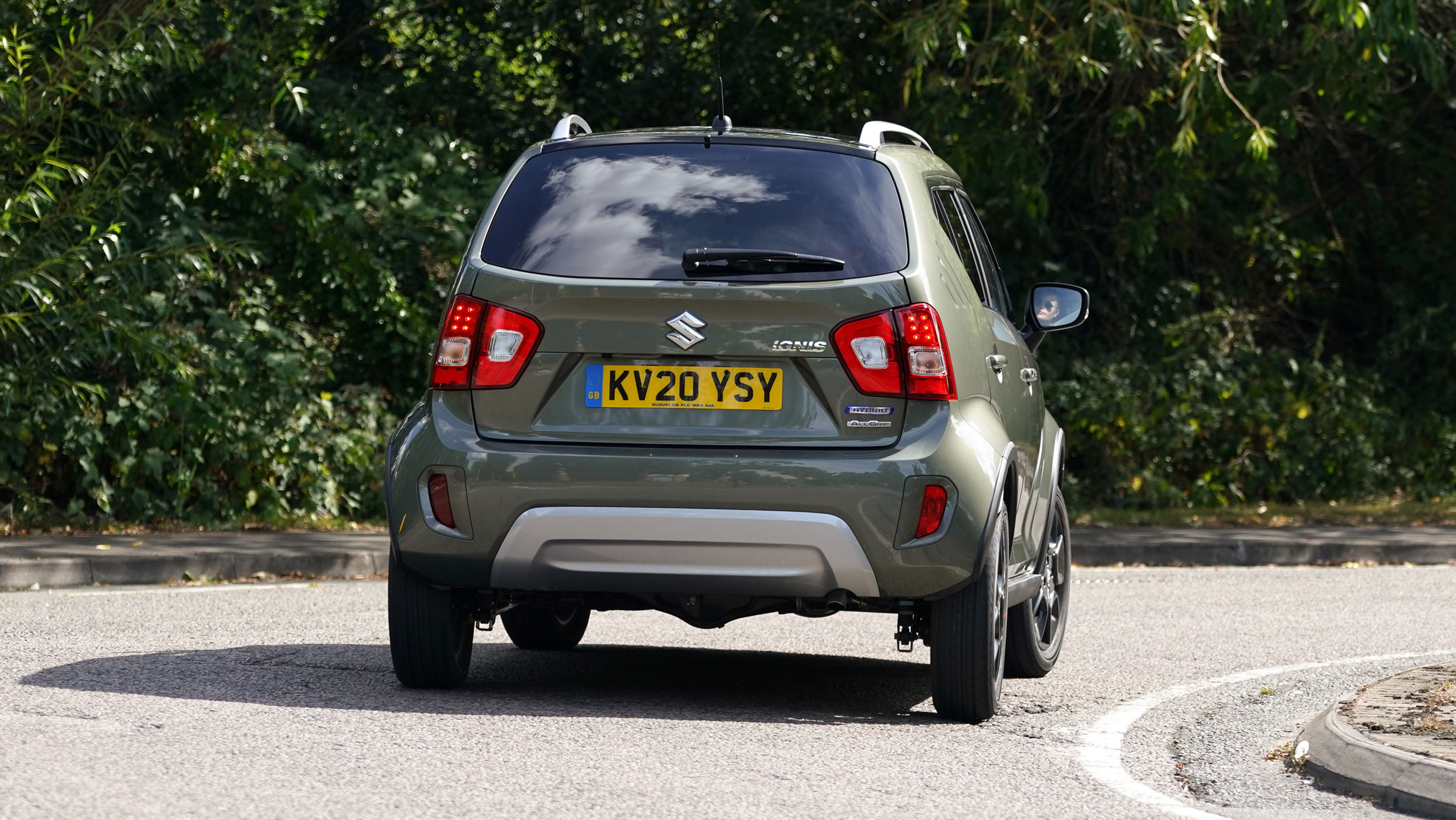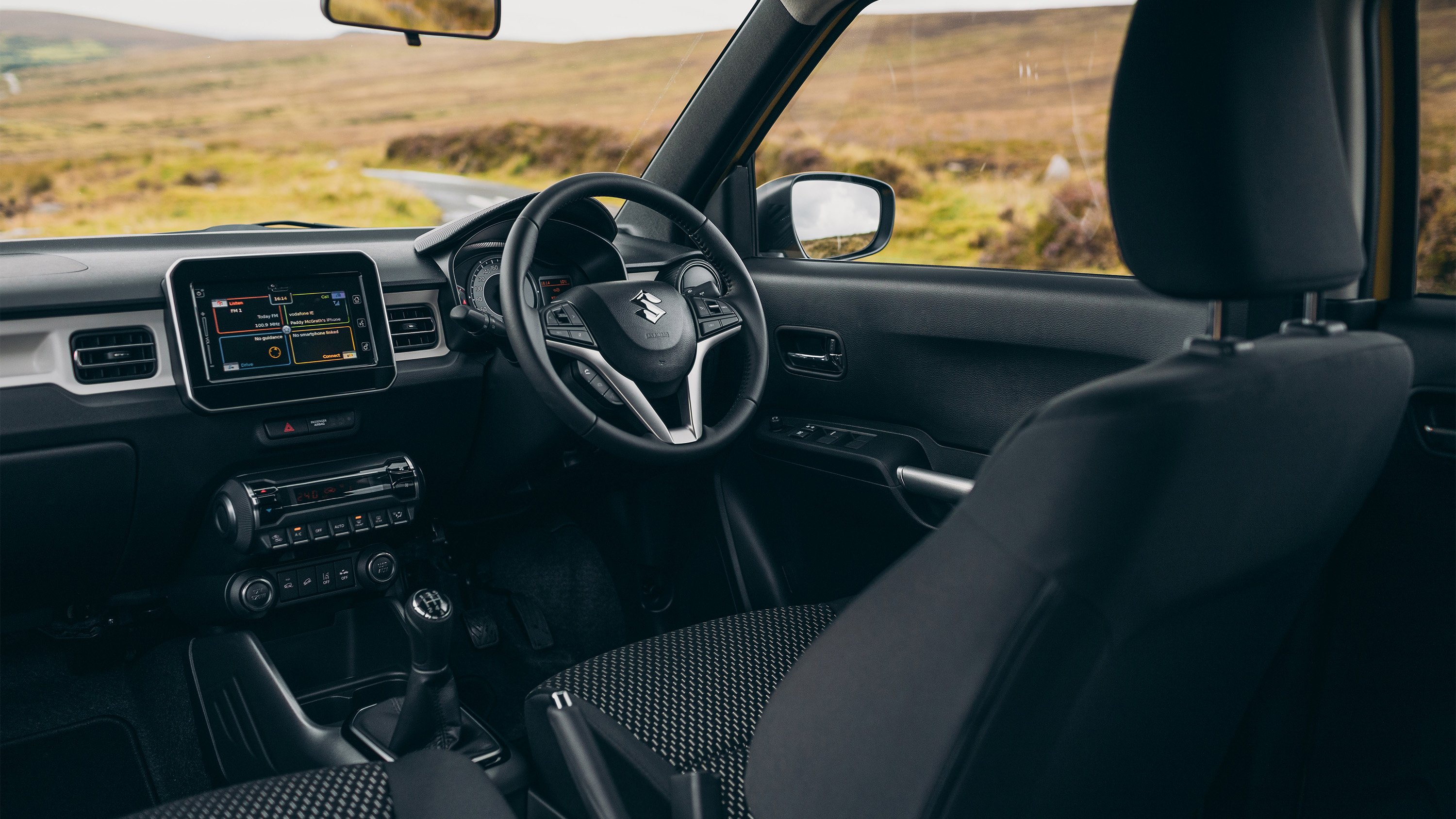
Suzuki Ignis review
Interior
What is it like on the inside?
You sit nice and high and visibility is good enough to make the reversing camera seem superfluous. The body profile means there’s headroom to shame a cathedral, too, though kneeroom is a bit of a squeeze in the back for taller adults. Though you get two seats in the back which slide back and forth on rails depending on whether you’re prioritising people or boot space.
Interior trim is hardly plush, but it feels darn tough, though some of the idiosyncratic switchgear and the touchscreen are a tad more difficult to use than in more mainstream rivals. Get used to them, mind, and it becomes all part of the Ignis’s character. Spec climate control (as opposed to the standard air con) and the cylindrical control panel is a tad fiddly to use but looks cool enough to warrant the sacrifice.
Infotainment is handled by a Pioneer touchscreen. It’s decent enough – and shares its layout with the system in the Alpine A110, pub-braggers – but it improves markedly once you’ve plugged in your phone. It integrates Apple CarPlay and Android Auto without fuss, so if you’ve got a smartphone, like most folks, then you can bypass the standard menu and use an enlarged phone interface as well. And it’s much higher definition than some rivals.
Meanwhile, the main instrument binnacle collects a large amount of information and presents it smartly, and – woohoo! – you get a rev counter, the absence of which has long been the hallmark of the budget city car. Troubling given how many of them end up caned within an inch of their life as holiday rentals.
Suzuki has tried to inject some fun into the Ignis’s cabin with retro door handles and a two-tone dash, and remarkably, it’s worked wonders. This is not a plush car but it has character and imagination about its person, and feels cheery and tough. Which is the Ignis all over, really.
Featured







